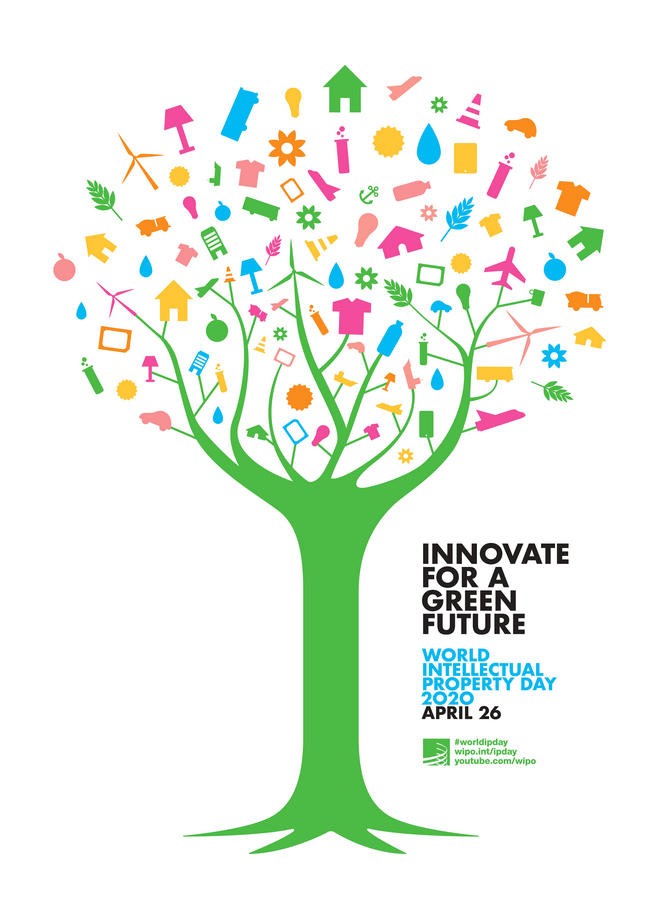
Hong Kong innovates for a green future with intellectual property protection
[Sponsored Article]
Planet Earth shines a spotlight on how intellectual property (IP) rights serve as the cornerstone for innovation and creativity as we innovate for a green future. Hong Kong highlights our robust IP system that supports the 26 April World Intellectual Property Day initiative.

Hong Kong is gearing up to join the international trade mark registration system under the Madrid Protocol in the next two years. But before that takes place, the Intellectual Property Department of the Hong Kong Special Administrative Region has been paving the way for the city’s inventors and innovators to create a sustainable future by safeguarding their IP rights.
Director of Intellectual Property David Wong acknowledges that climate change is the greatest threat to humanity. “Over the past decade, scientific data show that the planet has experienced the five warmest years ever recorded. Greenhouse gas and fossil fuels contribute to the global climate crisis. The world needs to move to a low-carbon future, and Hong Kong is no exception. Low-carbon technology helps us achieve this goal and reduces environmental damage. Our IP system plays an essential and enabling role in protecting the patents, designs, copyrights and trademarks of green, eco-friendly products. Not only does it reward and incentivise our inventors and creators, but it also generates goodwill vested in the brands, and protect consumers’ choice,” Wong explains.
Patents protect inventions
A patent can protect technological inventions for up to 20 years, and helps inventors fend off infringements. “With legal protection, a patent becomes an intangible, tradeable property, and can be offered for sale, licensing and commercialisation. Once the patent application is published, researchers and investors can collaborate with each other to spur the development of green technology,” says Wong. “For example, the public can search for approximately 78 million patent documents free of charge in the World Intellectual Property Organization (WIPO) patent database PATENTSCOPE. We have many eco-friendly products and technologies in Hong Kong that are protected by patents, and they play an important role in tackling climate change.”
Designs protect visual features of a product
Designs protect the shape, configuration, pattern or ornament of products. While many products are reusable and it therefore helps reduce carbon footprint, their special designs may be eye appealing. Protected for up to 25 years in Hong Kong, a registered design can foster the development and commercialisation of more sustainable and eco-friendly products.
Ordinary and certification trademarks support consumer choice
A trademark - a combination of graphics and words - conveys the commercial origin of goods and services and adds green credentials where appropriate. In a crowded marketplace, environmentally-conscious consumers give precedence to a trademark which could include the word ‘Green’, ‘Eco’ or ‘Enviro’.
“More sophisticated are certification marks,” Wong adds. “They are registered and issued by independent, non-trading organisations which may be used to certify that the goods and services bearing them meet certain environmental standards. These products can increase consumer confidence in making green consumption choices and encourage enterprises to invest more resources in developing environmentally-friendly products as well as promote social awareness. Prominent examples include FAIR TRADE CERTIFIED™ and the Hong Kong Green Label Scheme.”
Copyright safeguards creativity
Copyright exists in creative works ranging from literary and musical to dramatic and artistic and from sound recordings to films. It is an automatically conferred right granted to the owner of the original work and does not need to be registered.
Wong cites the example of sophisticated computer software which is behind the application of many green technologies, from vehicles to smart meters and solar plants, to manage demand and optimise resource use. The source code is treated as an original work and its writing is rewarded by the IP system. “In this case, when copyright protects creativity, it can bring benefits to society as a whole.”

With a good market and a robust IP system aligned with international standards to incentivise economic development, Wong sees the Guangdong-Hong Kong-Macao Greater Bay Area (GBA) Development Plan, announced in February 2019, as an important initiative to develop the area into a global innovation and technology hub.
“The HKSAR government has prioritised the promotion of innovative science and technology by committing over HK$100 billion to support the initiative. HK$10 billion of the funds will go to two InnoHK research clusters. That fully demonstrates our determination and vision,” states Wong. “With consumers and investors getting more eco-conscious, green technologies will play an important part in the innovation system in the making.”
Hong Kong IP advances
Under the leadership of Wong, the Intellectual Property Department continues to strengthen the city’s IP system. A significant development is the introduction of a trade marks amendment bill to the Legislative Council to pave way to implement the Madrid Protocol. While the goal is to launch the international trademark system in Hong Kong in 2022-23, the department is building a dedicated information technology system to process applications and registrations in tandem.
A milestone was the launch of the “Original Grant Patent” (OGP) System on 19 December 2019, under which applicants can file applications for standard patent directly in Hong Kong. This brings the city’s IP system in line with mainstream practices in the world. As of 31 March 2020, the Patents Registry has already received 64 OGP applications.

“The IP system has a role to play in innovating for a green future. We have to make things more sustainable, give incentives to inventors and translate awareness into solid action,” Wong concludes.
